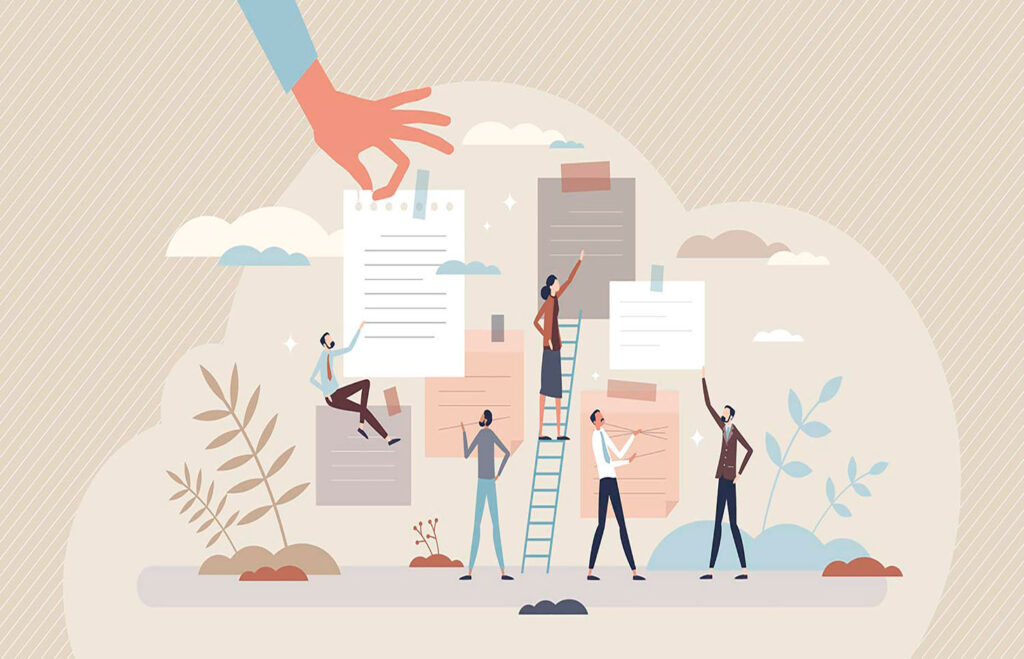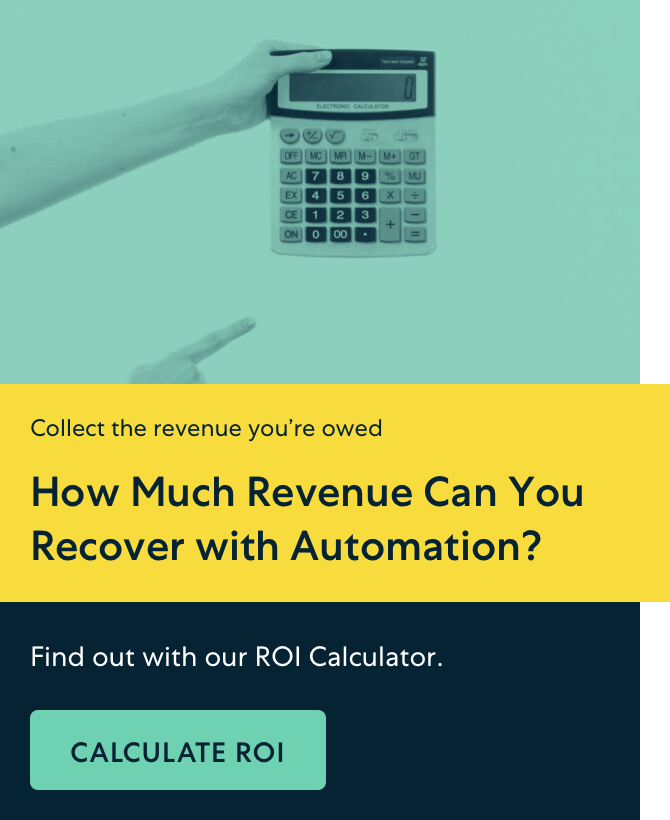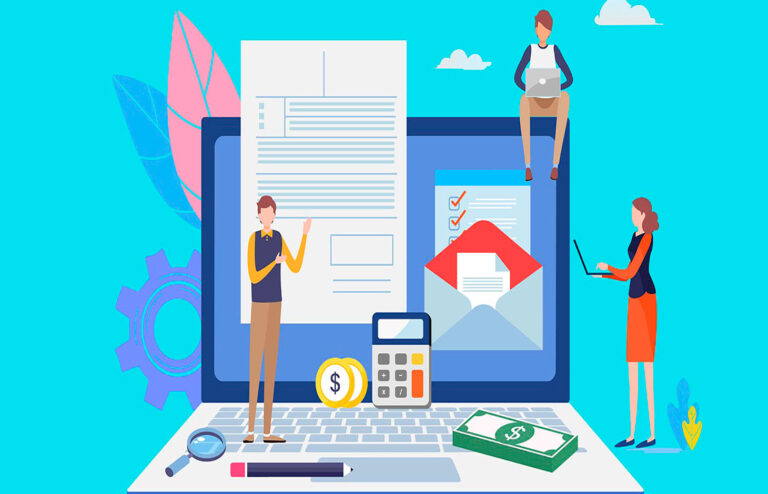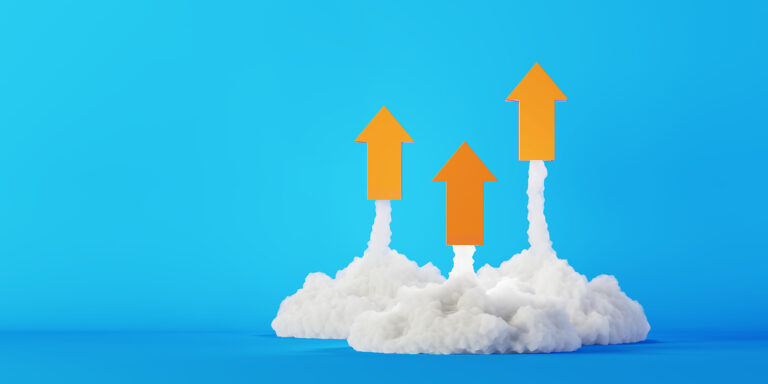The SaaS market has no signs of significantly slowing down as the subscription model becomes increasingly popular across the globe; also growing hand-in-hand with the market is the subscription management software sector. In fact, the global subscription and billing management market size is projected to reach a stunning $7.8 billion by 2025, up from just $4 billion in 2020. And while many SaaS startups are projected to fail, those that are in it for the long run know that subscription management solutions that help reduce churn while boosting customer retention are an absolute gamechanger.
As SaaS businesses grow and evolve over time, many of them find that their subscription billing process grows alongside them.. While there are plenty of different solutions for recurring billing, most approaches land in one of three stages:
- A fully manual process. This usually consists of spreadsheets, Google Docs, and inevitably a lot of frustration. While manageable in the very early stages of growth, it quickly becomes unsustainable once you’re dealing with more than around a dozen customers.
- Automated invoicing. A billing platform can automate your invoicing process. This gets the job done and saves time for your billing team. However, that’s typically the only benefit it brings to your subscription business.
- Full-blown subscription management software. This automates not only billing workflows, but also adjacent accounts receivable (AR) processes in real-time. It also improves GAAP compliance, creates a better customer experience, and provides insights that can help you scale even further.
In theory, as your business grows, you could move through each of these solutions sequentially. Alternatively, you could just skip right to number three, and start using an enterprise-class subscription management business model from the get-go.
Your billing platform is a strategic element of your fintech stack when chosen carefully. Ultimately, the right solution enables further growth—whether you’re already an enterprise business or a start-up with big dreams.
Determined to find the right solution to manage subscriptions for your business? Here are eight features you should be on the lookout for when shopping for subscription billing software.
TL;DR
- Enterprise-class billing software should be built on a general ledger foundation to automate invoicing and invoicing-adjacent tasks. It should also provide a flexible product catalog to easily customize pricing strategies.
- Your billing platform should be ASC 606-compliant for recurring revenue, and should seamlessly integrate with other systems in your tech stax. It should also provide a customer portal, deep reporting capabilities, and minimal implementation times.
- By housing disparate systems into one platform, your subscription management software solution should function as a single source of truth for all users in your ecosystem.
1. A general ledger foundation
You know all about the general ledger (GL) and why every accounting department needs one. If you need a refresher, we’ve talked about it in-depth here. When choosing a SaaS billing platform, it’s equally important that the software is built on a GL foundation.
This is because GL backing enables your recurring billing solution to automate more than just your invoicing activities. With a GL foundation, you can also automate invoicing-adjacent AR tasks like:
- handling ASC 606-compliant revenue recognition,
- distinguishing sales from collections,
- speeding up month-end close,
- and more.
Some subscription management solutions were built on a GL system from the get-go, while others added it later. The benefit of a platform that falls under the former category is that it natively speaks the same language as your accountants—and, conveniently, the IRS and SEC.
That means these products can go further and deeper with the AR functions above. Billing software options that developed their GL functionality later can’t match this agility.
2. A flexible product catalog
There’s no such thing as a perfect pricing model. Many leaders of SaaS companies are quick to confirm the value of consistent pricing experimentation.
“When you’re small, test massive changes,” SaaS marketing expert Ryan Law suggests. “The smaller you are, the easier it is to test crazy hypotheses without alienating a ton of existing customers.”
These massive changes could come in the form of completely switching up your billing model or switching from a tiered model to usage-based pricing. If your SaaS billing solution boasts a flexible enough product catalog, you could even consider A/B testing multiple billing models at the same time.
For larger businesses, Law recommends constantly working on optimization.
“With a decent customer base, even tiny improvements to SaaS pricing strategies will have sizable returns. Something as simple as reordering your pricing packages, or changing the last digit of your price can make a real difference to MRR.”
Regardless of how big or small the changes to your pricing model, the ease with which you execute them hinges on your subscription billing system’s catalog. A flexible catalog allows you to:
- group customers into cohorts to experiment with different pricing and billing models,
- customize plans and pricing for individual customers or at the catalog level, and
- easily create discounts and coupons.
Buyer beware: not all modern SaaS billing systems come with such robust functionality in the catalog department. If pricing optimization is important to you—which it should be—don’t be afraid to ask specific questions when evaluating your software options.
3. Automated, ASC 606-compliant revenue recognition
I touched on this point earlier, but the benefit of this functionality is so important that I believe it warrants a deeper dive.
You know how complicated revenue recognition for a recurring revenue business is. You simply can’t recognize revenue manually, and doing so with a combination of piecemeal solutions isn’t a much better alternative.
However, this is where GL-backed subscription management software shines.
Just like you can easily set up a schedule to handle recurring billing, you can do the same for revenue recognition. You’ll want software that:
- allows you to set different revenue earning methods and schedules for different products within the software
and then
- automatically recognizes your revenue according to ASC 606 guidelines.
Read more: 7 Requirements of an ASC 606-Compliant Recurring Billing System
4. Powerful integrations and API
Whether through native integrations or an API, connecting your SaaS billing platform to other systems in your tech stack helps maximize the benefits that come from automation.
“[It] is about so much more than connecting computer systems or applications together,” says Adam Hughes of business integration software platform, Cleo. “True business integration means designing ways for all the participants in your digital ecosystem to interact seamlessly and support the outcomes important to your organization.”
It’s true—SaaS companies that take advantage of subscription management integrations see data silos crumble. As a result, departments within their organizations work together more effectively.
Take your CRM, for example. Integrating it with your end-to-end SaaS billing software can:
- help your sales team get through the quote-to-cash process more efficiently,
- reduce or eliminate the need to manually copy data from one system to the other, and
- aid the sales team in identifying upsell opportunities.
“Enterprises that promote collaboration through strategy and technology are better positioned to achieve fundamental business goals and succeed. That’s precisely what an integrated platform provides,” Hughes concludes.
5. A customer portal
In the subscription business world, things can change pretty often. Maybe:
- new customers want to sign up,
- existing customers want to upgrade or downgrade their plans, or
- a customer’s billing information changes.
67% of customers say they prefer self-service over reaching out to a business’s support team. Clint Fontanella, customer support-turned-marketing professional at HubSpot, agrees.
“Even though I am a former customer support rep, when I’m the customer I actually loathe having to work with customer service teams,” he writes.
The right SaaS billing software enables your customers to take charge of their subscription management. They can sign up or make changes to their subscription and personal information as needed. These solutions offer SaaS businesses both a self-service portal and hosted registration pages.
The power to self-service when it comes to these simple matters removes a barrier to action for the customer. But it also benefits your business.
“On the opposite end, your customer service team benefits from not having to field repetitive or similar cases,” Fontanella continues. “Customers who have bigger problems and more immediate needs can now get the attention they require because your reps don’t have to spend time answering simple questions.
6. Deep reporting capabilities
“Traditionally, the driving force behind decision-making has been the experience and instincts of business leaders,” Bernard Marr, author and advisor on business, tech, and data, notes. “And unfortunately, that’s one of the primary reasons as to why so many small businesses and start-ups fail.”
Instead, switching to a primarily data-based, decision-making, enterprise billing system can help SaaS businesses make decisions that are 19X more profitable.
Your business probably has no shortages of systems you can pull such data and metrics from. Your SaaS billing and subscription management software is one of them.
The data housed in your billing system can help with things such as:
- sales forecasting,
- informing product direction,
- refining marketing messaging,
- developing a deeper understanding of the customer lifecycle,
- and more.
On the importance of data-backed business decisions, Marr goes on to say that: “In today’s climate of fast-paced technological change and digital transformation, it’s increasingly becoming the deciding factor in whether a company will rise to the top or get wiped out by more forward-thinking, digitally adept competitors.”
7. Minimal implementation times
Implementing an enterprise billing solution is no small undertaking; it needs to flawlessly integrate into all the systems your SaaS system uses, such as tax engines and CPQ software. While this can require custom integrations, don’t get me wrong: that’s not an excuse to have drawn-out implementation times!
A stellar subscription management solution should allow business to efficiently and effectively migrate data all while ensuring data security. With short lines of communication, scalable SaaS components, and contingency plans, you can ensure that your SaaS implementation process is a success.
8. A single source of truth
I think this is one point that I really can’t overstate, which is why it’s my final point. Enterprise-class subscription management should seamlessly integrate with your existing tech stack and sync all information into its platform, creating only one single source of truth. In this industry, reconciliations spell nothing but hassle: it’s often a tedious, manual process that requires hours of manpower, all to ensure that numbers match.
I’m reminded of this statistic from PWC which states that business partners spend an average of 30% of their time collecting data and reconciling it between systems. “They spend a lot of their time on activities that could easily be automated,” says PwC Director Marc Sterk.
Say you use one system for generating quotes, but another for invoices. That could lead to seemingly endless reconciliation if the two systems have different prorating standards. By consolidating all these disparate data points and systems–from billing information and data analytics to revenue recognition and payment gateways–all users in your enterprise-class billing ecosystem will be working from the same source of truth, 24/7. Now that’s truly seamless.
Enterprise-class recurring billing encourages faster scale
Whether your SaaS business is a start-up or closing in on enterprise status, it needs a solution for handling recurring billing.
Sure, you could go through all the stages of various SaaS billing solutions, moving from spreadsheets to subpar software, and finally to a modern subscription management system. But that means there will be multiple periods where you’re suffering from growing pains within your AR operations as a result.
Instead, skip right to the third stage with a strong enterprise billing solution as soon as possible. It could make a huge difference in the speed at which your business scales.
The sooner you bill like an enterprise, the sooner you’ll become one.
FAQs about Enterprise Billing Solutions
Q: What are Enterprise Billing Solutions?
Enterprise billing solutions are comprehensive billing systems designed to handle recurring billing needs of businesses, significantly improving their speed, efficiency, and scalability. These solutions are imperative for SaaS businesses, specifically if they aim to become an enterprise quickly.
Q: Why are Enterprise-class billing software important for SaaS businesses?
Enterprise-class billing software is essential for SaaS businesses as they help automate invoicing processes and other accounts receivable tasks. Utilizing these systems, businesses can alleviate growing pains within their AR operations and speed up their overall growth.
Q: What features should I look for in an Enterprise Billing Solution?
When looking for an enterprise billing solution, consider features such as a built-in general ledger foundation, ASC 606 compliant systems for recurring revenue, seamless integration with other tech systems, a customer portal, deep reporting capabilities, minimal implementation times, and the ability to be a single source of truth for all users.
Q: Why is a General Ledger important in an Enterprise Billing Solution?
An Enterprise Billing Solution built on a general ledger foundation enables your business to automate much more than just your invoicing activities. With a GL foundation, SaaS businesses can automate invoicing-adjacent AR tasks like handling ASC 606-compliant revenue recognition, distinguishing sales from collections, and speeding up month-end close, among others.
Q: How does a flexible product catalog contribute to an Enterprise Billing Solution?
A flexible product catalog enables businesses to play around with various billing models, customize pricing for individual customers or at the catalog level, and create discounts and coupons with ease. Such flexibility allows businesses to continually optimize and experiment with their pricing strategies.
Q: How do Enterprise Billing Solutions assist with revenue recognition?
GL-backed subscription management software helps businesses easily set up a schedule to handle recurring billing and the same for revenue recognition. It allows businesses to set different revenue earning methods for different products and automatically recognize revenue according to ASC 606 guidelines.
Q: How can integrating an Enterprise Billing Solution with other tech systems help SaaS businesses?
Connecting your SaaS billing platform to other systems in your tech stack helps maximize automation benefits. Such integrations help to reduce data silos, making departments work together more efficiently. For instance, integrating your CRM with your end-to-end SaaS billing software can improve the efficiency of your sales team and aid in identifying upsell opportunities.
Q: What role does a customer portal play in Enterprise Billing Solutions?
Most customers prefer self-service over reaching out to a business’s support team. Hence, an effective SaaS billing software should offer a self-service portal that empowers customers to manage their subscription and personal information independently. This not only removes a barrier to action for the customer but also reduces the load from your customer service team.
Q: How can Enterprise Billing Solutions support data-backed decision-making?
Enterprise Billing Systems house significant data that can aid in decision-making processes, such as sales forecasting, informing product directions, refining marketing messaging, and understanding the customer lifecycle. When leveraged properly, such data can lead to decisions that are substantially more profitable.
Q: What should businesses consider when implementing an Enterprise Billing Solution?
Implementing an enterprise billing solution requires careful consideration. The chosen solution should integrate seamlessly with all the existing systems, ensuring data security while also having short communication lines and contingency plans. The solution should ideally consolidate all data points and systems, creating a single source of truth, making reconciliation processes less tedious.







